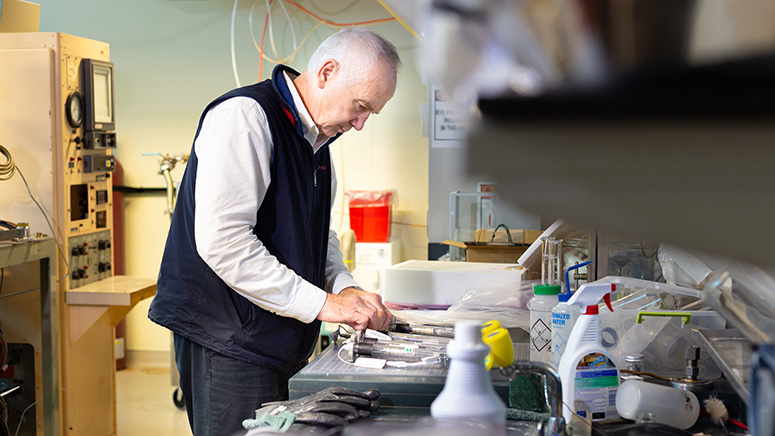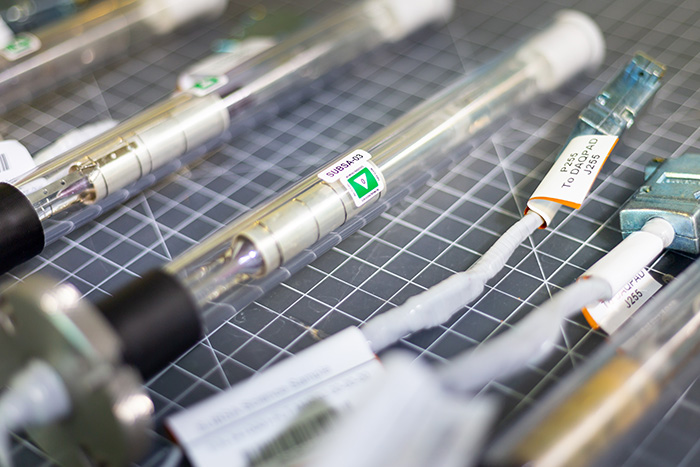
N
uclear radiation on Earth may soon be more easily detected thanks to investigations launched into low Earth orbit on the International Space Station U.S. National Laboratory (ISS). Aleksandar Ostrogorsky, professor of mechanical and materials engineering at Illinois Institute of Technology, is the principal investigator of an ISS research project dedicated to studying the effects of microgravity on the production of single semiconductor crystals.
The 2019 experiments are conducted in a furnace built in 2002 for Ostrogorsky’s project “Solidification Using a Baffle in Sealed Ampoules” (SUBSA). The SUBSA furnace is roughly the size of a small microwave and was designed to operate inside the Microgravity Science Glovebox, a major science facility where astronauts can safely manipulate the experiment by inserting their hands into a pair of built-in gloves that reach inside the box.
SUBSA is used to study the impact of microgravity on the formation of semiconductor and scintillator crystals. Semiconductors power electronic devices such as computer chips, circuits, medical imaging devices, and detectors of nuclear and infrared radiation.
Typically, crystals benefit from growth in microgravity because the reduced melt motion in space allows for fewer imperfections during solidification.

“On Earth, buoyancy continuously deforms and moves fluids in complex manners, making it difficult to study how materials behave when they solidify from the melt to form semiconductor crystals,” Ostrogorsky explains.
The material used in the present study is indium iodide, which is a heavy metal halide and promising semiconductor material for detecting nuclear radiation. Indium iodide does not contain toxic elements and is currently the only detector material suitable for use on the ISS.
This expansive investigation involves contributions from Volodymyr Riabov (M.S. MAE ’16, MAE Ph.D. candidate) studying melt growth, which is a slow, precise solidification of the pure material, while Martin Volz, project scientist from NASA Marshall Space Flight Center, and Arne Croell, professor at the University of Freiburg in Germany (currently on leave at The University of Alabama in Huntsville), are focusing on crystal growth by vapor transport.
Ostrogorsky shares, “The goal of our experiment is to understand the formation defects in microgravity in order to improve the production process on Earth.”
Three melt growth experiments and one vapor transport study have been conducted on the ISS from March through April 2019. Each melt growth experiment lasted 24 hours, while the vapor growth continued for 30 days. These crystals recently landed on Earth and are being used for testing and fabrication of gamma-ray detectors in the fall. Two more experiments were conducted in September using the SUBSA furnace, which was brought down from space for minor repairs and maintenance.
Two additional experiments are planned for the ISS in November 2019. Aleksandar Ostrogorsky, "Detached Melt and Vapor Growth of Inl in SUBSA Hardware," Center for the Advancement of Science in Space (managers of the International Space Station U.S. National Laboratory) $299,827